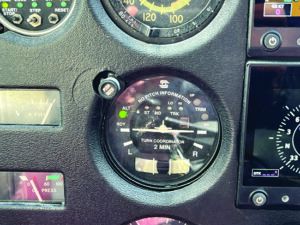You’ve heard the term TAA—for technically advanced aircraft. It’s an aging FAA definition for GA aircraft equipped with modern avionics. The term goes back to the early 2000s, and worth reading is the FAA’s 2003 general aviation industry safety study, which looks at TAA safety as it relates to avionics equipage. Link to it at https://tinyurl.com/msukwrhs.
Based on equipage, the FAA recognizes a TAA as having an IFR GPS with moving map, a multifunction display with weather, traffic and terrain graphics, plus an integrated autopilot. Although these days, autopilot integration is a pretty general term.
MODERN IFR ON A BUDGET
For the focus of this month’s Panel Planner 101 example, it’s worth looking at a utilitarian example of a TAA that can be used for earning the commercial certificate—where before the TAA rule, you had to train for the commercial in a complex aircraft. Equipage wise, we’ve come a long way since the FAA adopted the TAA definition and it’s tough to find an IFR machine not equipped with an IFR navigator and mapping display with traffic overlay.

Autopilots are becoming far more common thanks to price reductions on models with an AML-STC, rather than a TSO, although they’re still a sizable investment for lower-end aircraft. The FAA doesn’t say if a tablet-based moving map fits the bill, but it should—and most of us fly with them and enjoy impressive amounts of data, in addition to traffic and weather overlays. Still, you’ll spend some money to equip for the TAA standard.
But for flight schools and flying clubs or anyone who wants to earn the commercial certificate, building a TAA avionics suite is surely cheaper and easier than going out and buying and operating a complex airplane with retractable gear and variable pitch propeller. The Cessna 172M panel below is but one example of rolling your own TAA on a budget.
USE WHAT’S THERE
When it comes to training aircraft, especially for owners on a limited budget, the advice is the same as it ever was. As long as it works and there is reasonable field support, there’s nothing wrong with retaining existing older gear.
This Cessna has an S-TEC 30 two-axis rate-based autopilot, shown in the lower right image. The analog, turn-coordinator-based System 30 has been dropped from the S-TEC line (most likely because Garmin’s all-digital GFC 500 outsold it in its later years, thanks to more features and a cheaper price), but you can still get support from Texas-based S-TEC parent company Genesys Aerosystems. The airplane also had an L3 Lynx NGT9000 multifunction transponder with ADS-B traffic and weather display, picking off another requirement for the TAA equipage standard.
That left one system for upgrade—the IFR GPS. A Garmin GTN 650Xi was the navigator of choice and it fits the main stack in place of the King KX155. It was moved as a secondary backup navcomm with glideslope, driving the existing KI209 indicator.
For a taste of modern IFR flying, a couple of Garmin G5 flight instruments were installed (which added GPSS capability to the autopilot) and the vacuum system was removed. Tallying up the invoice, it’s what I consider a budget IFR upgrade. The pair of G5 instruments is around $6000 and the IFR GPS is $13,600. After installation, the buy-in might fall just below $25,000. Again, cheaper than buying and maintaining a retrac for commercial training, plus the aircraft can serve as an instrument (and primary) trainer.
Need a panel for planning? Drop us a line with good images and we’ll take a look.


